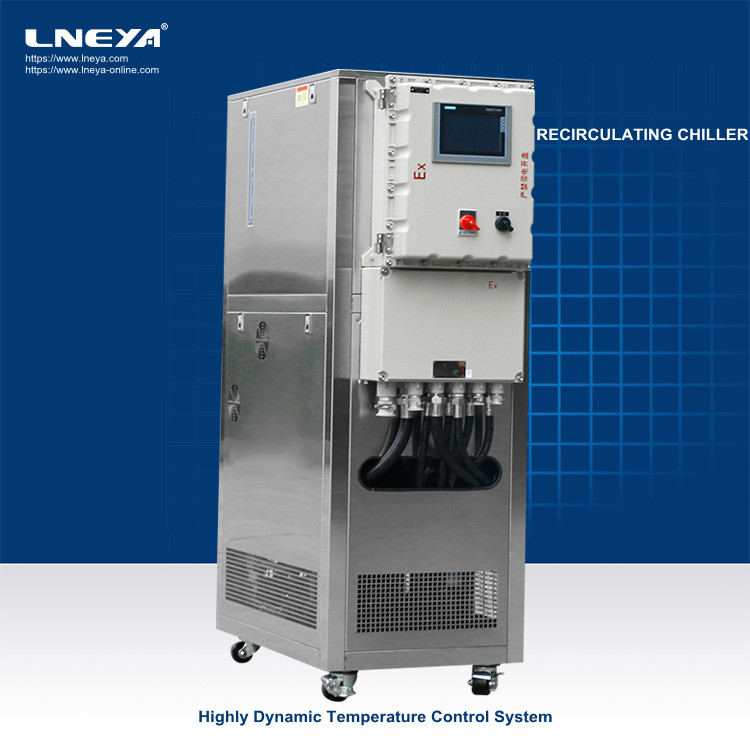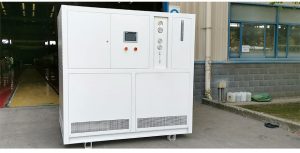How to deal with the equipment failure alarm of the recirculating chiller
What to do if there is a failure and alarm during the use of the recirculating chiller equipment? In order to ensure production, such problems need to be resolved quickly.

We must first understand the causes of failures and alarms, and adopt different solutions for different causes. Common recirculation chiller equipment failures and alarms include reverse phase alarm, contactor jam alarm, over-temperature protection alarm, abnormal pressure alarm, overload alarm, etc. No matter what kind of fault alarm, it can be known according to the alarm light and alarm signal information.
1. Recirculation chiller equipment reverse phase alarm
When a reverse phase alarm occurs in the recirculation chiller equipment, the circulating pump cannot be started. There are two reasons for the reverse phase alarm of the high and low temperature cold water circulation device. One is that the phase sequence of the three-phase power line is connected incorrectly, and the other is that the reverse protector fails. If the phase sequence of the three-phase power cord is connected incorrectly, just adjust the phase sequence directly. If the reverse phase protector fails, it needs to be replaced.
2. Contactor stuck alarm
Recirculation chiller equipment contactor stuck alarm, the over-temperature indicator will also be on, generally there are three reasons: one is the heating AC contactor stuck, the other is the computer board heating has been outputting, there is a problem, and the third is the over-temperature The protection switch operates incorrectly. When the contactor is stuck and alarms, the continuous heating of the heat transfer oil will cause danger, so deal with it in time.
3. Alarm for lack of media
In order to protect the heating pipe and circulating pump of the recirculating chiller equipment, the system will stop heating when there is a shortage of media. When there is a lack of media, check whether there is a lack of media (water or oil). If the water temperature meter shows that there is a lack of media, you can adjust the pressure value of the pressure switch to a lower value.
4. Overload alarm
When the recirculation chiller equipment has an overload alarm, check whether the circulating pump is overloaded. If the pump is overloaded, you can increase the overload current ampere.
When the recirculation chiller equipment fails and alarms, as long as it is dealt with in time, there will be no safety issues. LNEYA is a manufacturer of recirculating chiller equipment, equipped with an after-sales service system. For minor problems such as fault alarms, you can consult us sales@lneya.com for a faster and safer solution.
Related recommendations
-
Vapor deposition coating machine temperature control system-cooling water system
1187The main purpose of the vapor deposition coating machine is to carry out scientific experiments and research on film formation process. It is composed of quartz tube reaction chamber, heat shield furnace cabinet, electrical control system, vacuum ...
View details -
Cold and hot one mold temperature machine maintenance method description
1252In the process of using the hot and cold integrated mold temperature machine, it is necessary to carry out regular maintenance and repair. Then, LNEYA will share with you the maintenance method of the hot and cold integrated mold temperature machi...
View details -
Introduction of refrigerators for metal workpieces such as deep-frozen bearings
861LNEYA's continuous-freezing work piece cryogenic box has a fast cooling rate, and the low temperature can reach -150℃. It can be used for cold assembly of bearings and mechanical parts. The cryogenic treatment can improve the mechanical properties...
View details -
How to solve the alarm signal issued by the chillers of the battery module?
1103The battery module refrigeration and heating machine is mainly in the fields of electronics, metal, aviation, automobile, scientific research, etc. So how to solve the problem when the equipment sends out an alarm signal? The circulation system of...
View details
 LNEYA Industrial Chillers Manufacturer Supplier
LNEYA Industrial Chillers Manufacturer Supplier













